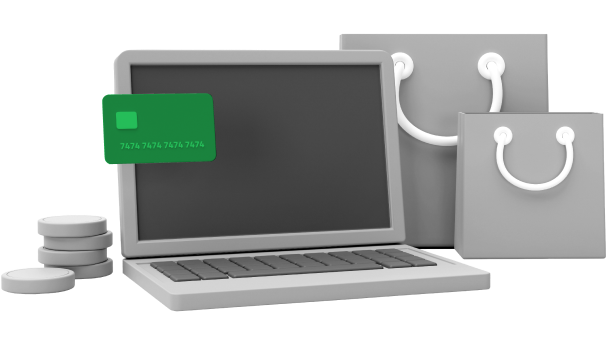
The most common way to identify EMV-ready cards is via the little security chip included in the card’s body. This technology is not brand-new; it has been around for many years in Europe, Canada, and many other parts of the world. Additionally, a growing number of software development firms are increasing their level of experience in EMV software development.
It’s a perfect moment to transition to EMV for retailers that haven’t already done so. More customers than ever are utilizing chip cards, and as they learn about the tap-and-go simplicity of cashless transactions, the ROI on card payments EMV terminals will keep rising.
While the switch to EMV has been widely implemented in many nations, the U.S. market, for instance, still needs to catch up. There has been much finger-pointing regarding why the shift is taking so long. Still, the truth is that while the procedure will require some time and work to finish, it also presents businesses with a fantastic opportunity to update outdated systems, boost the confidentiality of their fin-tech industry, and set the stage for technological innovations.
But, businesses should have a thorough understanding of how EMV solutions operate to facilitate a seamless transition. In this article, we are going to talk about three things you should know about EMV software development for a seamless migration to EMV:
Things You Should Know About Smooth EMV Migration
The Range of EMV Solutions Goes Beyond Chip Cards
Besides chip cards, EMV technology now supports token issuance for user-enabled electronics such as mobile payments, wearables, and other devices. When making purchases digitally, in-app, or in physical stores, the provided tokens can be utilized for activities across all platforms whether you have the card. Various EMV payment transaction types exist right now, including:
- PIN-based card payments
The majority of POS systems and contactless payments today allow chip-based card transactions. This kind of financial transaction is safer because consumers are required to enter a PIN code for payment verification. As EMV cards cannot be “swiped” or accessed without approval, making them less susceptible to fraudulent use.
- Contactless Transactions
EMV cards also permit “tappable” contactless transactions, which are currently the favored payment method among customers. The volume of contactless payments increased by 150% in the last two years and is expected to grow by double digits over the next ten years. Cashless payment use scenarios are expanding, ranging from retail payments to buying transportation tickets.
- Card-Not-Present (CNP) Payments
Cardholders that engage in card-not-present (CNP) payments do not hand over a credit card to the retailer. These activities include in-app, internet, and NFC payments made through digital wallets. EMV programming presupposes incorporating additional security measures like SMS OTP, in-app verification, or push alerts to achieve the highest level of protection.
Card Present Payments are More Reliable Thanks to EMV Solutions, Although Fraud is Not Completely Eradicated
EMV cards employ smart chips rather than magnetic stripes to store data and authenticate transactions. Users must press a PIN code entry to validate in-person transactions. This factor increases the security and dependability of EMV payments when combined with other technological infrastructure upgrades.
EMV cards are nevertheless still susceptible to flaws. EMV cards, for instance, can’t totally protect you from card-not-present (CNP) fraud. As previously established, a card-not-present transaction occurs when you make a payment online without ever physically touching a POS machine. This presents a chance for scammers to take advantage of. They only require the card’s number, expiration date, CVV code, and kind. If no additional security measures were taken, they could buy products off the World Wide Web without your permission once they obtain that information.
Encryption technology from the trader’s POS system is another requirement for EMV cards. Every time a payment is made, a special transaction code is generated for every card. The POS terminal then decodes and authenticates this code to perform the payment. A scammer might be able to access the decrypted data and conduct unlawful transactions if the POS terminal’s protection is lax.
Although You are Not Forced to Use EMV Solutions, You are Responsible for the Liability Shift
The use of EMV transactions is not mandated by law. Yet, the card companies have decided to conduct a responsibility shift to hasten this new benchmark’s implementation. According to this liability transition, the institution that is least able to facilitate an EMV payment will be responsible for any potential deception.
In other words, under the new regulations, the purchasing bank, rather than the lending institution, will be held accountable for the crime if the fake or stolen card includes an EMV chip and the retailer cannot scan it. Following their contract, the purchasing bank will often pass the expense to the retailer. Hence, there is a financial motivation for retailers to modernize their contactless payments.
The issue’s impact on your image should also be taken into account. Hackers may specifically target outdated technology as they’re more open to attack. As a result, if you own a business that accepts magnetic stripe cards, your reputation is at stake because customers will start to distrust you. After all, there are more recent technologies out there that are more reliable.
Conclusion
The EMV system is, in short, here to live. EMV card machines are the approach to choose if you’re searching for a practical and safe contactless payment option for your company. You should own an EMV chip card processor or portable scanner as a company owner. Protecting your company is a wise move, and by demonstrating that you stay up with new technology and security procedures, you may gain the trust of your clients.
You may be interested in: What is a POS system and how does it work?

